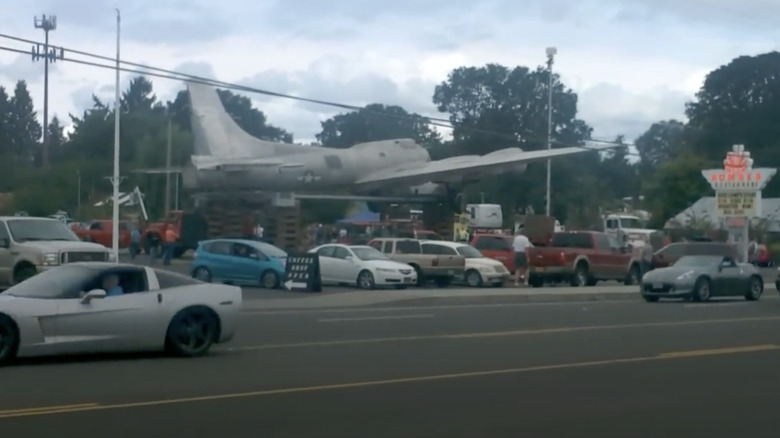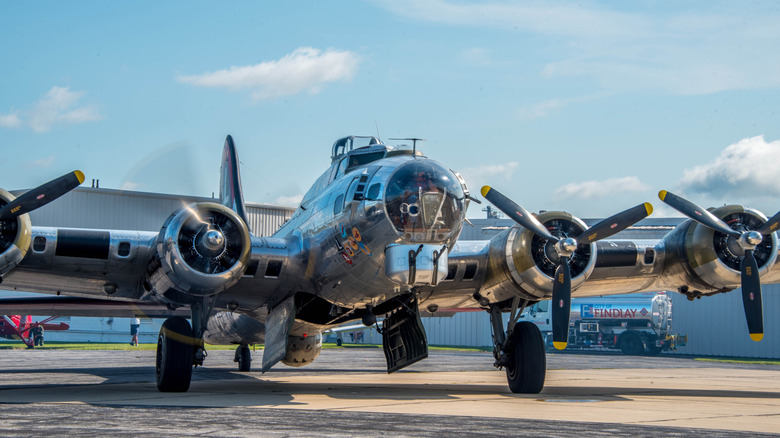This WW2 Bomber Spent Over 6 Decades On A Gas Station Roof - Now It Might Fly Again
The B-17 bomber, also known as the Flying Fortress, helped change the course of World War II. Manufactured by Boeing, over 12,000 were made for combat. It was dubbed a flying fortress due to its impressive defensive capabilities and armament. It first flew in 1935, but only a few were in service before the U.S. entered World War II. Production quickly ramped up, and the B-17 eventually served in every combat zone. The aviation world moved on after the war, and today only a handful are still flying.
One Flying Fortress that never saw service instead had an unlikely path — saved from a scrapyard fate, it didn't end up with a civilian pilot or in a museum, but rather on top of a gas station in Oregon. Nicknamed the Lacey Lady, this B-17 was purchased by gas station owner Art Lacey just after the war, in 1947. It hasn't flown in almost 80 years, but a small yet devoted group of volunteers has been at work since 2014, betting they can change that.
The Lacey Lady's history in Oregon actually started with another bet. The B-17 bombers that weren't scrapped were sold at rock-bottom prices, and many of them went on to second careers, carrying freight or helping to extinguish fires. Art Lacey thought it would make a fun addition to his gas station (who wouldn't?) and bet a friend he could buy one for $15,000. He eventually made his way to Altus Army Airfield in Oklahoma, determined to bring home a bomber.
The Lacey Lady
If you think buying and moving a B-17 bomber sounds difficult, you'd be correct. After securing $15,000 from a friend (over $220,000 today!), Lacey faced another obstacle. He was a trained pilot, but only on single-engine aircraft, and was required to have a co-pilot in order to bring the B-17 home. His daughter reports that instead of finding a co-pilot, Lacey used a mannequin. Fact or legend, what is certainly true is that faulty landing gear caused him to crash the first B-17 he test flew. That plane had an extensive combat history, and Lacey ended up with a Flying Fortress that was in better condition. Rather than flying it back to Oregon, however, he elected to truck it back to his gas station, where it became a beloved landmark as the Milwaukie Gas Station Bomber.
Art Lacey passed away in 2000, after which his family established the B-17 Alliance Foundation. The gas station bomber was finally taken down and moved to a hangar in 2014, with the intent of restoring it to flying condition. Working off original Boeing blueprints, the foundation has made some progress, restoring the seats, flight controls, and instrument panel structures. Work is now focused on the wings and nacelles. The foundation, which has already spent $500,000 on the project, hopes to take the B-17 to the sky within 10 years, but admits that it may take longer and cost much more. The volunteer-led project will likely require an additional $8.5 million to complete the restoration.

